"Aquastop" for the dishwasher
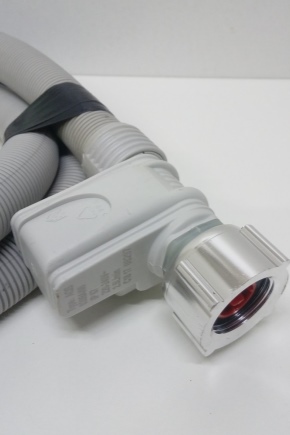
Sometimes in stores, consultants offer to buy a dishwasher with an Aquastop hose, but often they themselves do not really understand what it is and what it is for - they insert a phrase only to attract the attention of customers.
In the article, we will help you figure out what the Aquastop protective system is, why it is needed, how to connect and check the stop hose, whether it can be extended. Knowing how the leakage protection system works will help you operate your dishwasher correctly.
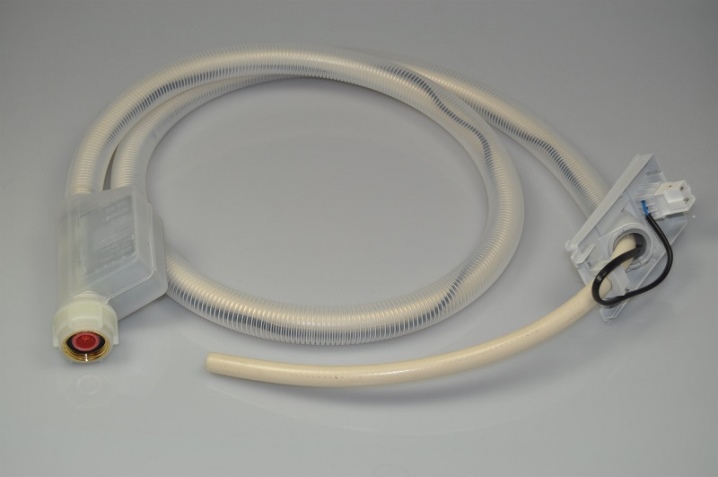
What is it and how does it work?
The Aquastop protection system is not installed on dishwashers by accident. This is an ordinary hose in a special casing, inside of which there is a valve that is triggered in case of accidents in the water supply system or water pressure drops and thus saves equipment from stress and breakdowns.
Many do not even imagine that without a protective mechanism in the form of "Aquastop" a dishwasher can fail from a water hammer - a sudden increase in pressure in the water supply network, which happens quite often.
This fixes the sensor that is in the structure.
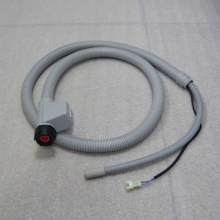

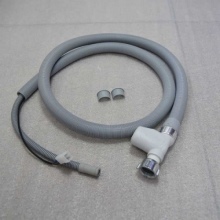
The device also provides protection against leaks or rupture of the connecting hose, preventing water leakage and saving the living space and apartment from below from flooding. So without "Aquastop", the functions of which are important and necessary, it is better not to buy dishwasher designs.
However, modern models of dishwashers, almost all come with such a protective system. In addition to the Aquastop inlet hose, manufacturers supply the equipment with a special pallet with an electromechanical device. Let's get acquainted with its principle of operation:
- when a leak suddenly appears, water enters the sump, and it quickly fills;
- under the influence of water, a control float (located inside the pallet) pops up, which raises the lever;
- the lever closes the electrical circuit (reacts when there is more than 200 ml of water in the sump - the limit of the permissible level is violated), which triggers the valve to shut off the water.
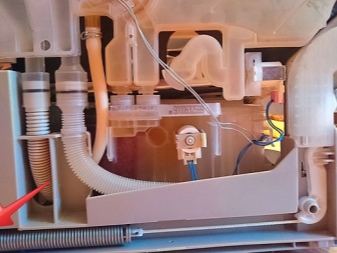

Thus, the Aquastop protection worked: the dishwasher stopped working for the sake of its own safety and the safety of the owners. What happens to the water that the unit managed to download before the leak? It automatically goes into the sewer pipe.
It turns out that there is an external (for the inlet hose) and an internal Aquastop protection system.
For a hose, there are several types of protection - manufacturers ensure the effectiveness of this design in different ways.
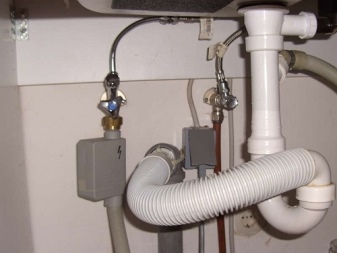
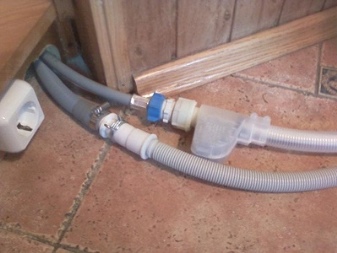
Species overview
Each type of protection of the "Aquastop" system has its own characteristics in terms of design, pros and cons in use. Let's consider them in detail.
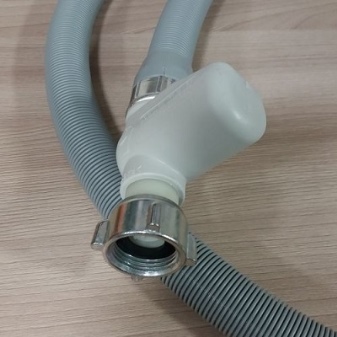
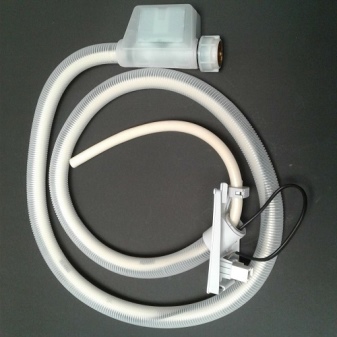
Mechanical
This type is no longer found often on modern dishwasher models, but on some older versions there is a mechanical protection "Aquastop". It consists of a valve and a special spring - the mechanism is sensitive to changes in the water pipe.
When the parameters change (in case of leakage, water hammer, burst, and so on), the spring instantly locks the valve mechanism and stops flowing. But the mechanical protection is not so sensitive to small leaks.
She does not respond to digging, and this is also fraught with consequences.


Absorbent
Absorbent protection is more reliable than mechanical protection. It is based on a plunger with a valve, a spring mechanism and a reservoir with a special component - an absorbent. Reacts to any leak, even a minor one, works like this:
- water from the hose enters the tank;
- the absorbent instantly absorbs moisture and expands;
- as a result, under the pressure of the spring with the plunger, the valve mechanism closes.
The disadvantage of this type is that the valve cannot be reused: the wet absorbent turns into a solid base, which causes the valve to be blocked. He, and the hose, become unusable. Basically, it is a one-time defense system.
It needs to be replaced after it has been triggered.
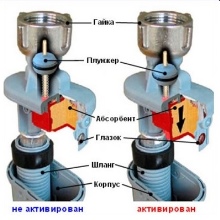

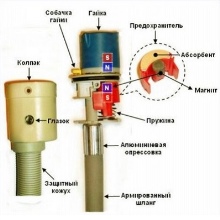
Electromechanical
It works in almost the same way as the absorbent type of protection. The only difference is that the role of the absorbent in this system belongs to the solenoid valve (sometimes there are 2 valves in the system at once). Experts attribute this type of protection to the most reliable Aquastop devices.
Both electromechanical and absorbent types protect the dishwasher by 99% (out of 1000, only in 8 cases the protection may not work), which cannot be said about the mechanical form. "Aquastop" with a mechanical valve protects by 85% (out of 1000, in 174 cases, leakage can occur due to non-response of the protective system).
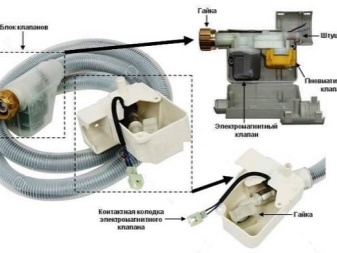

Connection
We will tell you how to connect a dishwasher with Aquastop or replace the old protective hose with a new one. You can do this yourself with the right tools at hand.
- It is necessary to shut off the water: either the water supply to the dwelling is completely shut off, or only the tap to which you need to connect the equipment (usually, in modern conditions, such repair is always provided).
- If the dishwasher was already in operation, and we are talking about replacing the hose, then you need to unscrew the old element.
- Screw on a new hose (when buying a new sample, all sizes and thread types are taken into account). It is better to replace it without an adapter, as they say, changing a hose to a hose - this is more reliable, additional connecting elements can weaken the water supply system.
- To ensure the tightness of the connection and protection from mechanical stress, the junction of the Aquastop hose with the water pipe is insulated with a special adhesive tape.
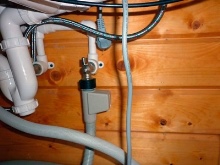
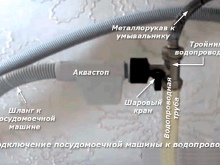
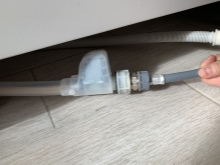
Now let's consider the option when there is no Aquastop system on the machine. Then the hose is bought separately and installed independently.
- The first step is to disconnect the dishwasher from the power supply and the water supply system.
- Then disconnect the water supply hose to the unit. Check it along the way and, if necessary, replace the rubber seals, clean and rinse the coarse filters.
- Install the sensor on the tap that fills the machine with water, so that it "looks" towards the clockwise direction.
- A filler hose is connected to the Aquastop unit.
- Check the inlet hose, turn on the water on the sly and make sure everything works.
The tightness of the connections must be checked, without this, the equipment is not put into operation. During the check, if you notice even a few drops of water on the connecting elements, this is already a "stop" signal.
Correctly installing is not yet an indicator, a check for the tightness of the protective hose is mandatory.
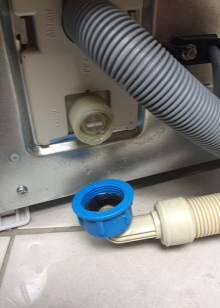
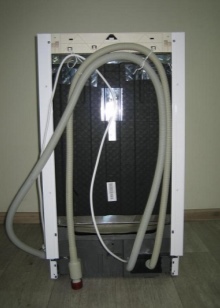
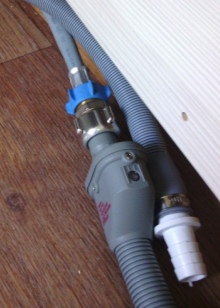
How to check?
Let's try to figure out how the Aquastop protection system works. If the dishwasher does not want to turn on and collect water in any way, then the device “did not pump up” and blocked the operation of the unit. An error code may appear on the display indicating that the Aquastop has been triggered.
If the machine “does not knock out” the code, and the water does not flow, then do the following:
- turn off the tap to the water supply;
- unscrew the Aquastop hose;
- look into the hose: maybe the valve is too "stuck" to the nut, and there is no gap for water - the protective system did not fail.
When stopping the dishwasher, look into the tray to find the reason for the shutdown and to make sure that it is a stop-aqua hose. To do this, unscrew the lower front panel of the machine, use a flashlight to investigate the situation.We saw moisture in the pallet - the protection worked, which means that now we have to start replacing it.
It should be clarified that the mechanical type of "Aquastop" is not changed, in this case, you just need to compress the spring (until you hear a click) and then put the mechanism into operation.

Many signs can indicate a system malfunction. Let's dwell on a few of the most common signals.
- Water is leaking from the dishwasher or slowly leaking out - it's time to check the Aquastop protection, which means that it cannot cope and does not block the leak. Well, it's time to check the hose, repair it, but most likely it will need to be replaced with a new one.
- But what to do when Aquastop blocks the flow of water into the unit, but when it is turned off, there is no water around the machine, that is, there are no leaks? Do not be surprised, it also happens. In this case, it is possible that the problem is in the float or in another device responsible for measuring the water level.
Any signal is a reason to check the system. They are checked not only after installing the hose, but also during operation. It is better to prevent the malfunction ourselves than to face the fact that Aquastop did not work at the right time.
In general, this leakage protection system is quite effective, and experts recommend installing it on dishwashers and washing machines. It is not difficult to install and check it - it does not require deep technical knowledge, but only 15-20 minutes of time to cope.
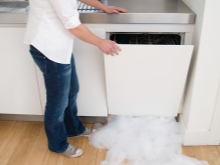
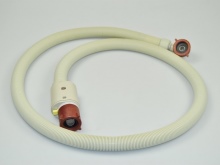

Can the hose be extended?
Many people are familiar with the situation when the dishwasher needs to be moved to another place, and the length of the inlet hose to connect to the water supply system is not enough. It's good when you have an extension cord in the form of a special sleeve at hand. And if not?
Then we extend the existing hose. You need to act like this:
- set how much is missing to the desired length;
- buy the necessary centimeters of the hose for direct connection according to the “female-female” principle;
- immediately purchase a connector (adapter) with a thread for connection according to the principle of "daddy-daddy" and the desired size;
- when you come home, disconnect the working hose from the tap and connect it to the new hose using a special adapter;
- connect the extended hose to the tap and install the dishwasher wherever you need it.
Please note that the inlet hose must not be taut, otherwise it may burst when the unit vibrates. The consequences of such an emergency are quite obvious, especially if at that moment no one is at home.
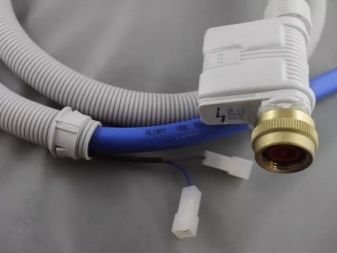














The comment was sent successfully.